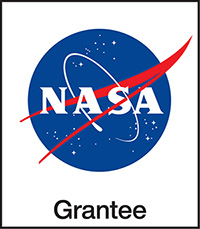Full Educator Guides
CONTEXT SETTING
ADVENTURES
CONTEXT SETTING
ADVENTURES
ACTIVITIES
How to Teach These Units
1. Safety Stories – Engineering
Learners share experiences with, and stories about, making hazards safer.
Guiding Question
Why is it important to make hazards safer?
Adventure Downloads
- 1
- 2
- 3
 Adventure Timing
Adventure Timing
10 MIN. Get Ready & Team Up
25 MIN. Storytelling
10 MIN. Reflect
45 MIN. TOTAL
Setup: Prep Time 30 min.
- Set up a Materials Table
*See Materials & Preparation in the Educator Guide linked above for full info.
21st Century Skills
- Communication
Habits of Mind
- Communicate effectively
Learners Will Do
- Share a story or experience about a time they made a hazard safer in their home, town, or school.
Learners Will Know
- Humans can make choices to make hazards safer.
Connecting Across Adventures
- Ready, S.E.T., Go!: Last time, learners explored space trash. As scientists, they observed the energy of space trash impacts. As engineers, they designed ways to protect against those impacts.
- Adventure 1: Sharing Experiences: Today, learners share experiences with and stories about making hazards safer.
- Adventure 2: Exploring Glove Uses: Next time, learners do simple tasks wearing different gloves and compare results. Then they learn how spacesuit gloves protect astronauts from space hazards.
Level Up! (Optional)
Refer to the Engineering Design Process poster (PDF). Ask: What phases of the Engineering Design Process did you use today? (The ASK phase. We asked why it is important to make hazards safer.) (5 min.)
Check out some great examples of the more than 2,000 NASA spin-off technologies that enrich our lives–and keep us safe–thanks to space exploration. (5 min.)
Tell learners, if anyone asks them what they did today, they can tell them “We shared stories about why it is important to make hazards safer.” (5 min.)

